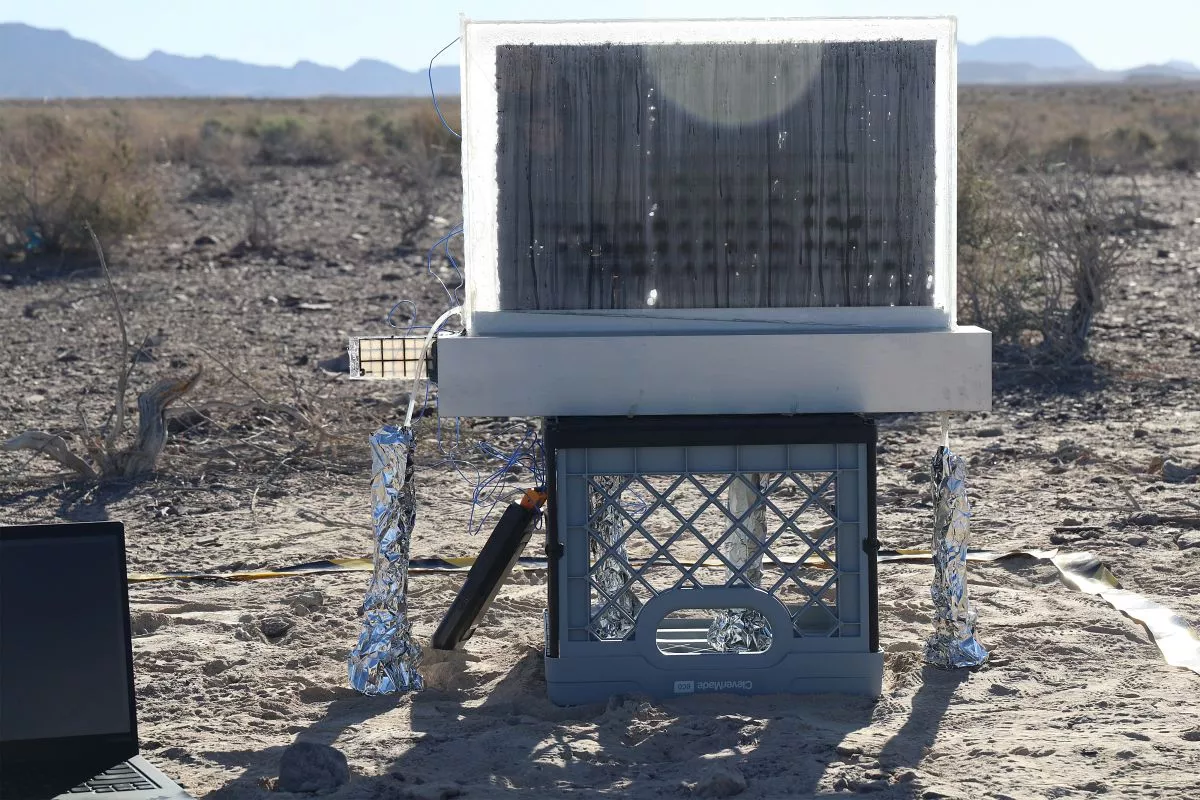There are plenty of ways to suck water out of the air, whether you need a little or a lot. Massachusetts Institute of Technology (MIT) researchers may have just hit upon one of the best ways to do it, with a device that doesn't need power, or even a filter, to deliver drinking water.
The team's passive atmospheric water harvester uses a vertical panel of hydrogel that absorbs water vapor from the air. This isn't entirely new: there have been other contraptions that use hydrogels for the same task.
The MIT engineers had a couple of clever tricks up their sleeve for this one. For starters, the hydrogel is molded to resemble a sheet of bubble wrap, with little 'domes' that swell up when they absorb water. That allows for increased surface area and a larger capacity for absorbing water vapor. This material is enclosed in a glass layer coated with a cooling polymer film.
As the captured vapor evaporates, the hydrogel domes shrink back down in an origami-like transformation. The evaporated vapor then condenses on the glass, and flows down through a tube as potable water.

According to the team, micro- or nano-porous hydrogels in other water harvester designs are embedded with salts to increase the materials' absorption capabilities. These salts can leak out with the collected water, making for an unpalatable drink.
The researchers' solution to this involves using a hydrogel with a microstructure that lacks nanoscale pores that salt can escape from. Next, they added liquid glycerol to the hydrogel to stabilize the salt, and prevent it from crystallizing and leaking out when water flowed down the tubes.
As a result, the water collected from this device contained less salt than you'd see at the standard threshold for safe drinking water – without an additional filter. With all these features, the MIT team might just have one of the most compelling designs for a passive water harvester out there.
The group tested its window-sized device in California's arid Death Valley, where it produced between 1.9 and 5.46 fl oz (57 and 161.5 ml) of drinking water per day across a range of humidities. The researchers noted that their invention harvested more water than other passive and even some actively powered designs in the driest conditions they encountered in the valley.

Now, those quantities aren't going to go a long way towards quenching anyone's thirst – so the team believes an array of these vertically hydrogel panels could be deployed in water-scarce regions to deliver larger amounts that could support an entire household.
The researchers conducted this test back in November 2023, and their results appeared in the journal Nature Water earlier this week. They're now working on improving the material to improve its intrinsic properties.
If you're curious about other ways to pull water out of thin air, check out this powered option that runs off batteries or solar, this contraption with copper fins, this spongy material made from inexpensive balsa wood, and this coffee maker that has a water harvester built in for some reason.
Source: MIT News




